Points to Remember: Mensuration | Mathematics (Maths) Class 8 PDF Download
Important Formulae
1. Area of a parallelogram = Base x Height
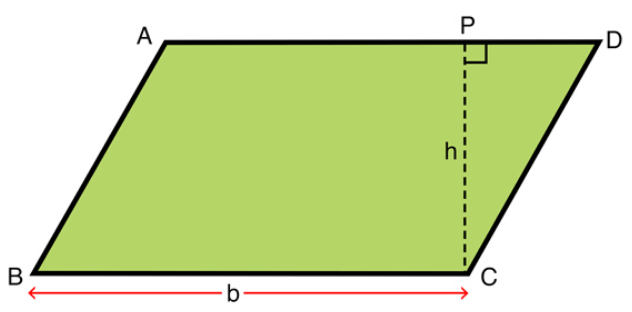
2. Area of a triangle = 1/2 x Base x Height
3. Area of a trapezium = 1/2 x [Sum of parallel sides] x Height
4. Area of a rhombus = 1/2 x Product of diagonals
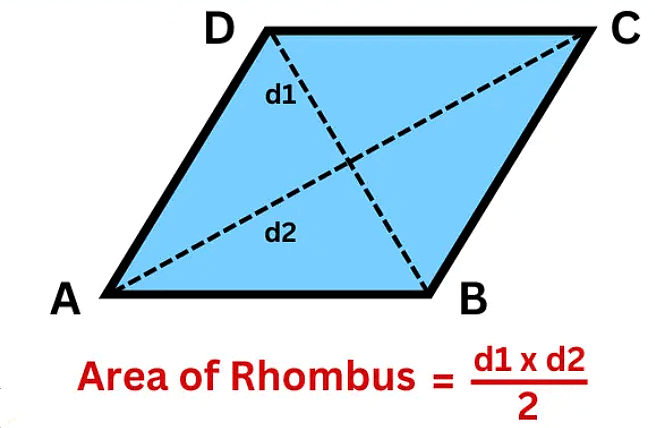
5. Surface area of
(i) a cuboid = 2[lb + bh + hl]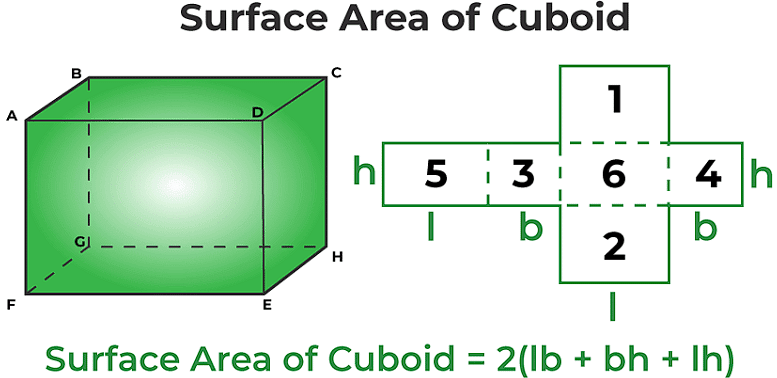
(ii) a cube = 6a2

(iii) a cylinder = 2πr(r + h)
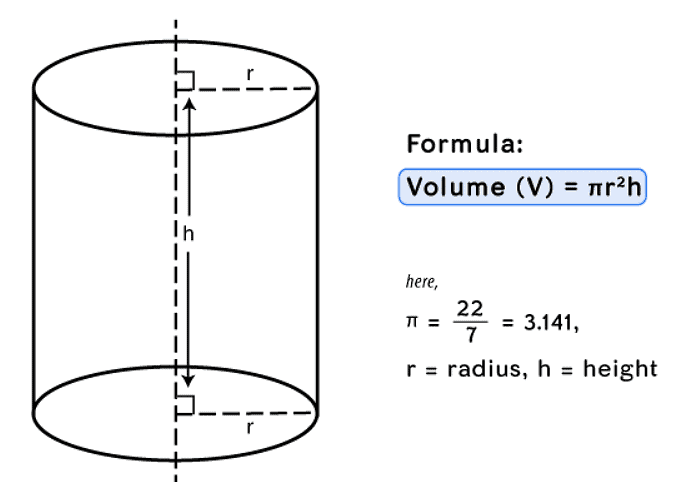
6. Volume of
(i) cuboid = l x b x h
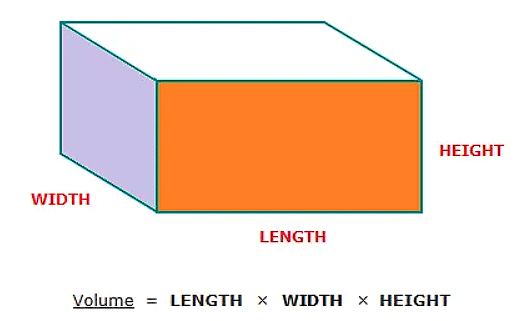
(ii) cube = l3

(iii) cylinder = πr2h
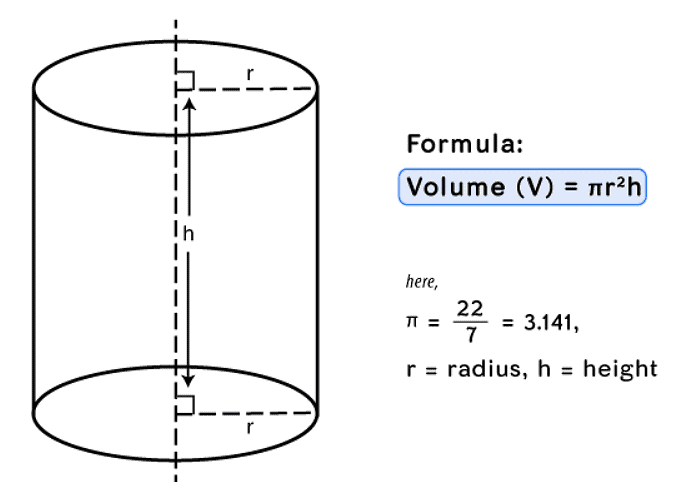
- 1 m3 = 1000 litres
- A square, a rectangle, a trapezium, a rhombus, a parallelogram, a triangle, a circle, etc., are plane figures and the surfaces enclosed by their boundaries are called areas. We have formulae to find their areas. The perimeter is the distance around a figure. The plane figures are also called 2-D shapes. The solids such as cubes, cuboids, and cylinders are called 3-D shapes. Faces bound a 3-D shape. These faces can be rectilinear curved or both.
Note:
I. All angles of a regular polygon have equal degree measures.
II. All sides of a regular polygon are equal in length.
Solved Examples
Q1. The length and breadth of a rectangle are 10 cm and 8 cm respectively. Find its perimeter if the length and breadth are (i) doubled (ii) halved.
Ans:
Length of the rectangle = 10 cm
Breadth of the rectangle = 8 cm
(i) When they are doubled,
l = 10 × 2 = 20 cm
and b = 8 × 2 = 16 cm
Perimeter = 2(l + b) = 2(20 + 16) = 2 × 36 = 72 cm
(ii) When they are halved,
l = 10/2 = 5 cm
b = 8/2 = 4 cm
Perimeter = 2(l + b) = 2(5 + 4) = 2 × 9 = 18 cm
Q3. A horse is tethered by a rope 10 m long at a point. Find the area of the region where it can graze (π = 3.14)
Solution: The area of the region the horse can graze is circular with a radius equal to the length of the rope.
The area of the circle is given by πr²
= 3.14 × 10²
= 3.14 × 100
=314
Hence the area of the region the horse can graze is 314 cm².
|
81 videos|423 docs|31 tests
|
FAQs on Points to Remember: Mensuration - Mathematics (Maths) Class 8
| 1. What are the basic formulas used in mensuration for finding the area and volume of common geometric shapes? |  |
| 2. How do you calculate the surface area of a cube? |  |
| 3. What is the difference between area and perimeter in mensuration? |  |
| 4. Can you explain how to find the volume of a cylinder? |  |
| 5. What is the importance of mensuration in real life? |  |

















